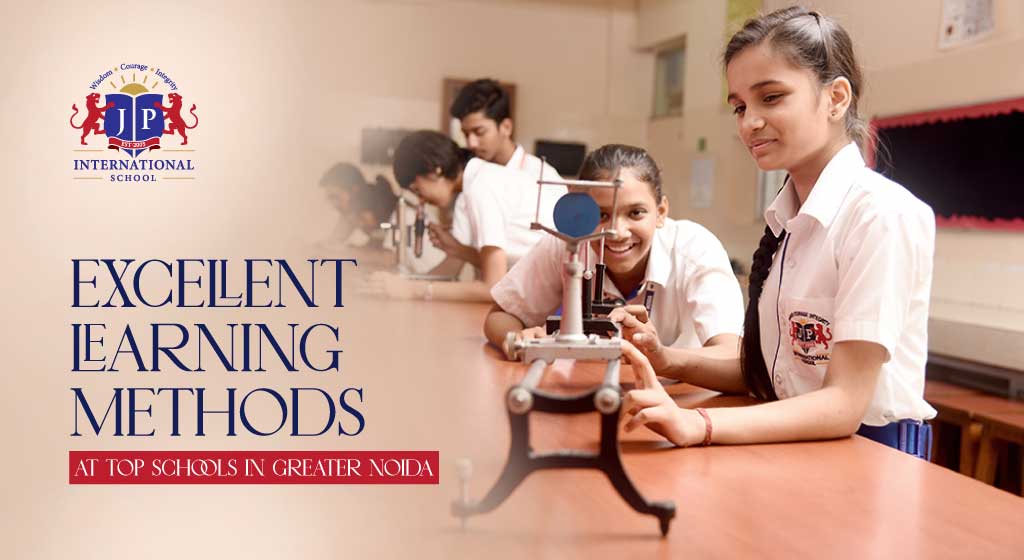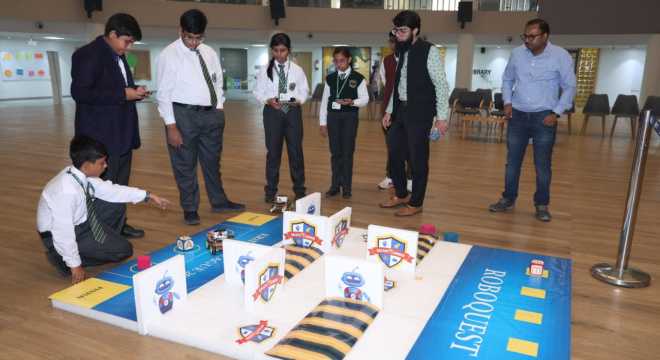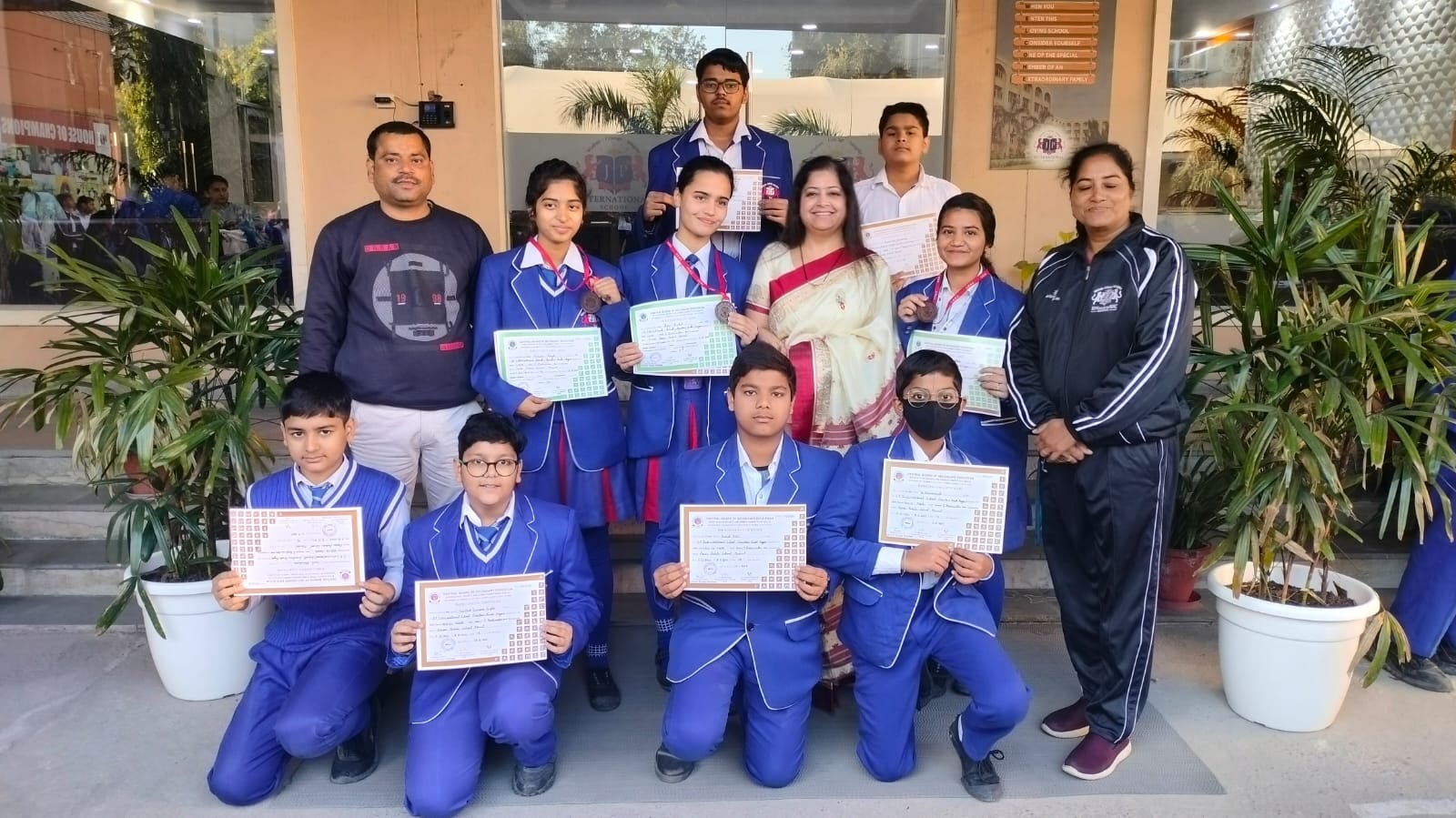

T:+91 7669-933-404
Email: [email protected]
Plot 3A, Sector Omega 1, Near Pari Chowk, Greater Noida, GB Nagar, Pin Code 201308


T:+91 7669-933-404
Email: [email protected]
Plot 3A, Sector Omega 1, Near Pari Chowk, Greater Noida, GB Nagar, Pin Code 201308

It can be difficult to maintain concentration, manage behavior, and encourage active participation while working with children and teenagers. Furthermore, teaching adults presents its own set of difficulties: adult learners often find it difficult to assimilate new information and shift old thought habits. There are several ways to approach learning methods although it is not simple as it sounds. Although here at one of the top schools in greater Noida, every method is tested and only the ones that have a positive impact on children are taught.
Gamification, or game-based learning, is a terrific approach to engage kids, especially those in primary and secondary school. The definition of gamification is a strategy that implements game-like elements into non-gaming activities to enhance motivation. Since children are very interested in games, from video games and mobile applications to simple playground and board games, this can be a great place to start. Playing video games has been connected to dopamine production, Dopamine being the hormone responsible for making and keeping us happy, As a result, bringing some ideas from video games into education can have a good impact on students’ moods, motivating them to succeed. However, it’s important to note that gamification isn’t appropriate for every situation. Lessons sometimes necessitate more serious dialogues. Furthermore, too much game-based learning is likely to take away some of the fun and incentive that children experience.

Teachers become more actively engaged in how they teach the curriculum and enhance each student’s learning potential with the goal of educating mindful learners who actively pursue information. They combine a range of… strategies to ensure that kids learn not only more, better, and faster, but also smarter.” These words by active learning advocate James Ballencia are true to this day.
Although conventional this method is very popular across the world. Some active learning strategies include:
Interacting and engaging with the world and people around us is the only way we can gain experience. This learning theory is based on David Kolb’s experiential learning cycle, and it takes into account the role of all of our experiences in learning, from emotions and cognition to our surroundings.
According to Kolb’s 1984 theory, the learning cycle is divided into four stages:
Although the majority of the teachers were not familiar with this learning method prior to the COVID-19 outbreak, some teachers have always preferred to work online. Working from home, setting their own hours, and being their own boss are all advantages that online tutors frequently appreciate. But, exactly, what does online teaching entail? Educating others over the internet, whether through individual or group video conferences, webinars, or messaging platforms, is what it is all about. To keep pupils engaged, it’s usually a combination of elements. The benefit of online learning is that it is available to a large number of people. Although not everyone is able to attend school, an increasing number of people have access to the internet. Of course, technology can be a barrier to education as well, but this barrier is, thankfully, breaking down as time goes on.
In this method, teachers can differentiate in a variety of ways, including how students access knowledge, the types of activities they engage in to master a topic, the final result of learning, and how the classroom is organized. Differentiation can take many forms, such as having students read books at their own reading levels, providing pupils with alternative spelling lists, or meeting in small groups to reteach concepts. This is a tried-and-true method of teaching mixed-ability classrooms, but it can work if handled carefully.
For example, depending on the aptitude of the students, some teachers may choose to teach entirely different subjects. However, kids may feel ashamed, and teachers may become burned out as a result of attempting to do too much at once. Differentiating instruction through a range of mediums, such as books, films, visuals, and vocal presentations, is a better way to go. This allows a variety of pupils to participate and comprehend the topic of the session.
Blended learning combines traditional face-to-face instruction with technology-based instruction. Although blended learning existed before the COVID-19 pandemic, it has grown in popularity among schools and institutions in the last two years. Because it bridges the gap between traditional and technology-based methods, a blended learning model can benefit both students and teachers. It incorporates enough technology to keep students engaged and focused, but it also gives time for kids to speak with teachers and classmates in person, which may be extremely beneficial. here are some of the examples of learning –
JP International School To encourage children to enjoy studying, we work with innovative technology that should generate revenue while also fostering their mental health. We use both broad media ways that aid students with learning activities readily because our primary goal is to involve youngsters during the learning programme in some of the best schools in Greater Noida.
29 March 2025
Technology allows students' everyday journey, be it in academics or outside of academics, to be t...
22 March 2025
STEM education prepares students for healthcare careers by combining biology, chemistry and physi...
15 March 2025
By embracing innovative EdTech solutions while preserving valuable aspects of traditional educati...
8 March 2025
This journey becomes more enriched when parents too take an active lead in their children’s aca...
28 February 2025
These are essential 21st century skills which students must be trained in to succeed in a world w...
 28 November 2024
28 November 2024
.jpg) 27 November 2024
27 November 2024
 8 December 2022
8 December 2022
